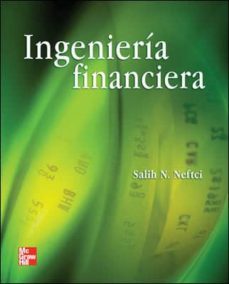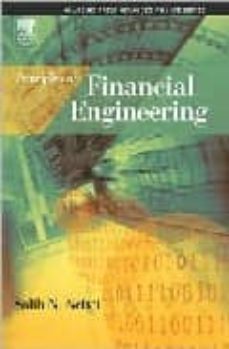Imprescindibles
Más vendidos Libros más leídos eBooks más leídos Todos los libros Todos los libros Autores destacados Series y sagas
Recomendados Libros recomendados Autores destacados Libros que inspiran Vidas con historia LGTBIQ+ English books
Ficción
Literatura Contemporánea Estudios literarios Clásicos Cuentos Poesía Teatro Libros de bolsillo Sagas literarias
Géneros literarios Novela romántica y erótica Novela negra Novela histórica Narrativa fantástica Novela de ciencia ficción Novela de terror Narrativa de humor Narrativa de viajes
No Ficción
Ciencias y tecnología Biología Ciencias Ciencias naturales Divulgación científica Informática Ingeniería Matemáticas Medicina Salud y dietas Formación Idiomas Estilo de vida Libros de Cocina Guías de viaje Narrativa de viajes Deportes Libros de Juegos Manualidades
Humanidades Autoayuda y espiritualidad Ciencias humanas Derecho Economía y Empresa Psicología y Pedagogía Filosofía Sociología Filología Biblioteconomía Estudios filológicos Estudios lingüísticos Estudios literarios Historia y crítica de la Literatura
Infantil
Juvenil
#Jóvenes lectores Narrativa juvenil Clásicos adaptados Libros Wattpad Libros Booktok Libros de influencers Libros de Youtubers Libros Spicy Juveniles Libros LGTBIQ+ Temas sociales Libros ciencia ficción Libros de acción y aventura Cómic y Manga Juvenil Cómic Juvenil Manga Shonen Manga Shojo Autores destacados Jennifer L. Armentrout Eloy Moreno Nerea Llanes Hannah Nicole Maehrer
Libros de fantasía Cozy Fantasy Dark academia Hadas y Fae Romantasy Royal Fantasy Urban Fantasy Vampiros y hombres lobo Otros Misterio y terror Cozy mistery Policiaca Spooky Terror Thriller y suspense Otros
Libros románticos y de amor Dark Romance Clean Romance Cowboy Romance Mafia y amor Romance dramatico Romance dramatico Romcom Sport Romance Otros Clichés Enemies to Lovers Friends to Lovers Hermanastros Slow Burn Fake Dating Triángulo amoroso
Cómic y Manga
Novela gráfica Novela gráfica americana Novela gráfica europea Novela gráfica de otros países Personajes, series y sagas Series y sagas Star Wars Superhéroes Cómics DC Cómics Marvel Cómics otros superhéroes Cómics Valiant
eBooks
Literatura Contemporánea Narrativa fantástica Novela de ciencia ficción Novela de terror Novela histórica Novela negra Novela romántica y erótica Juvenil Más de 13 años Más de 15 años Infantil eBooks infantiles
Humanidades Autoayuda y espiritualidad Ciencias humanas Economía y Empresa Psicología y Pedagogía Filosofía Historia Historia de España Historia Universal Arte Cine Música Historia del arte
Ciencia y tecnología Ciencias naturales Divulgación científica Medicina Salud y dietas Filología Estudios lingüísticos Estudios literarios Historia y crítica de la Literatura Estilo de vida Cocina Guías de viaje Ocio y deportes
SALIH N. NEFTCI
Recibe novedades de SALIH N. NEFTCI directamente en tu email
Filtros
Del 1 al 4 de 4
ACADEMIC PRESS . 9780125153904
Tapa dura
MCGRAW-HILL / INTERAMERICANA DE MEXICO 9789701066294
La obra obra consta de balances teórico-prácticos. También incluye productos derivados. Incluye ejercicios al final de cada capítulo y casos prácticos par estudio. Analiza los activos financieros y los instrumentos derivados desde la perspectiva de la ingenieria financiera. Ofrece un enfoque diferente al de la literatura financiera actual en el analisis de activos financieros y de instrumentos derivados. Describe los metodos para la creacion sintetica de activos en ambientes estaticos y dinamicos, y demostrar como usarlos. Hace enfasis en los metodos en proceso de desarrollo, los cuales sirven para resolver problemas relacionados con la administracion de riesgos, aspectos impositivos, regulaciones y, sobre todo, problemas de valuacion.
Ver más
Tapa blanda
ACADEMIC PRESS . 9780125153928
The intuitive, step-by-step approach of this book makes it one of the most accessible and popular explanations of the mathematical models used to price derivatives. For the Second Edition, Salih N. Neftci has thoroughly expanded one chapter, added six new ones, and inserted chapter-concluding exercises. He does not assume that the reader has a thorough mathematical background, and the math is lucid and fresh. His explanations of financial calculus are remarkable for their simplicity and perception.
Ver más
Tapa dura
ACADEMIC PRESS . 9780125153942
Salih N. NeftciFive new chapters, numerous additions to existing chapters, and an expanded collection of questions and exercises make this Second Edition an essential part of everyone's library. Between defining swaps on its first page and presenting a case study on its last, Neftci's introduction to financial engineering shows readers how to create financial assets in static and dynamic environments. Poised among intuition, actual events, and financial mathematics, this book can be used to solve problems in risk management, taxation, regulation, and above all, pricing. * The Second Edition presents 5 new chapters on structured product engineering, credit markets and instruments, and principle protection techniques, among other topics * Additions, clarifications, and illustrations throughout the volume show these instruments at work instead of explaining how they should act * The Solutions Manual enhances the text by presenting additional cases and solutions to exercises
Ver más
Tapa dura
Del 1 al 4 de 4





























